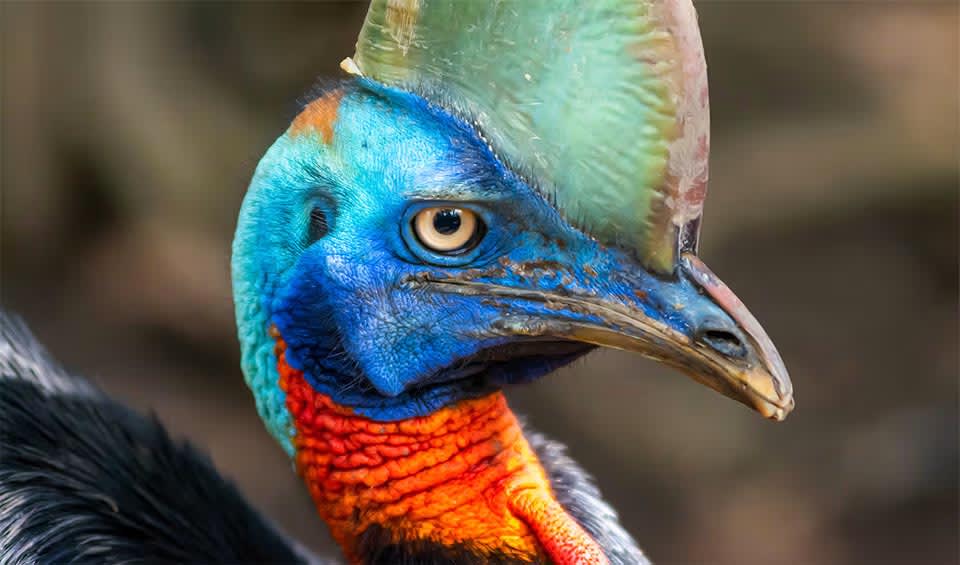Casuariiformes – Cassowaries & emu
Large flightless birds native to Australia-New Guinea
An order of large flightless birds comprised exclusively of species native to the Australasian region, specifically Australia and New Guinea. This order includes the formidable cassowaries—divided into the northern cassowary (Casuarius unappendiculatus), southern cassowary (Casuarius casuarius), and dwarf cassowary (Casuarius bennetti)—as well as the well-known emu (Dromaius novaehollandiae). The emu stands as the second tallest bird species in the world, following the ostrich, with some individuals reaching up to 1.8 meters (6.2 feet) in height.
Emus and cassowaries are superbly adapted to their environments. They possess powerful legs that allow them to run at considerable speeds and navigate through dense vegetation with agility. Both species have three-toed feet with sharp claws, which are primarily used for defense. Emus, in particular, can deliver strong kicks to deter predators or competitors.
Cassowaries are perhaps most famous for the distinctive casque atop their heads. The function of the casque is not fully understood, but hypotheses suggest it may play a role in mate attraction, sound amplification, or as a protective helmet when the bird runs through the dense underbrush of its rainforest home.
Another fascinating aspect of these birds is their breeding behavior. Emus have an unusual mating system where the females are the ones to court the males. Females may become particularly aggressive towards other females as they compete for a mate. After laying the large, dark green eggs, the female emus will leave the nest, leaving the males with the sole responsibility of incubation. Male emus are diligent parents, fasting and sitting steadfastly on the nest for around eight weeks until the chicks hatch.
Despite their strength and size, these birds face threats from habitat destruction and fragmentation, vehicle strikes, and, in the case of cassowaries, dog attacks. Conservation initiatives include habitat protection, road crossing management, and community education programs to minimize human-wildlife conflicts.
Families in this order
Large flightless birds native to Australia-New Guinea

